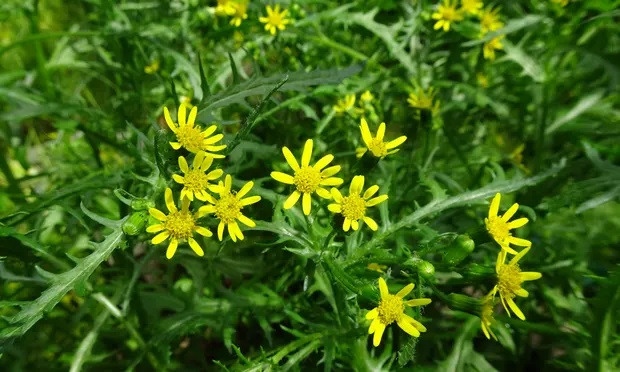In a remarkable success of conservation efforts, the York groundsel, also known as the York flower, once thought to be extinct for over three decades, has fortunately been brought back to life.
With the unwavering dedication of scientists and botanists, the York groundsel has risen from extinction, symbolizing the power of human determination and capacity to protect and restore the natural world.
What is the York groundsel?
York groundsel holds its place among the stunning array of flowering plants. Scientifically classified as Senecio eboracensis, this plant belongs to the Asteraceae family, commonly called the daisy family. What makes this flower intriguing is its unique origin as a hybrid from the combination of two common flowers — the native groundsel and Oxford ragwort.
The native groundsel, or Senecio vulgaris, is a widely distributed plant renowned for its pale yellow flower and feathery leaves. The Oxford ragwort, or Senecio squalidus, boasts golden-yellow flowers with sturdy stems.
The York groundsel is a self-pollinating plant native to York in the United Kingdom. On top of that, it is one of the only six new plant species to be discovered in the last 100 years.

History of extinction
The discovery of the York groundsel during the 1970s marked an exciting chapter in the region’s botanical history. This flower thrived, adding a touch of natural beauty to the local landscape. However, as time passed, the York groundsel faced numerous challenges that led to its gradual decline in numbers.
Agricultural expansion was one of the primary factors contributing to the decrease of the York groundsel. As the demand for land for site development and farming increased, natural habitats were altered or destroyed, resulting in the loss of growing areas for the flower. Human activities gradually restricted the available space for the York groundsel to flourish, ultimately impacting its population size.
Another significant factor in the decline of the York groundsel was weed-killing chemicals. As agricultural practices intensified and the desire for clean lands grew, the widespread use of herbicides became common.
Unfortunately, while intended to target unwanted vegetation, these chemicals affected the plant. The indiscriminate use of weed killers impaired the plant’s growth and reproduction, leading to a drop in its overall numbers.
These flowers were reported to have disappeared in the 1990s, and despite extensive searches, no living specimens were found for the next three decades. Some believed that this unique floral treasure was forever lost.
Recovery and preservation of the flower
Though words have escalated about the loss of the York groundsel, some researchers have managed to save a few of the flowers and kept them on a window sill at the University of York. However, the flowers soon died, but their seeds were sent to the Millennium Seed Bank at Kew.
After hearing this alarming news, botanists at Natural England started researching and planning for Britain’s first de-extinction case. They constructed a plastic greenhouse for the experiment at the Rare British Plants Nursery in Wales. Thankfully, 98 of the 100 seeds germinated and produced many new plants.
Soon after the success of bringing York groundsel offspring, the seeds were sown in unique pots around York. Around 60,000 seeds were planted around York, but a lack of sufficient rain means the plants are small, according to Alex Prendergast, a vascular plant senior specialist at Natural England. But he said there were now several thousand of the plants, and he believed it was likely that they would now self-seed around the city.

New ordinances to support conservation endeavors
Weed killing is seen to have caused most of the damage in the decline of the York groundsel. Authorities reflected on this tragic event and implemented new ordinances to support the conservation of the endangered plant. In 2000 the City of York Council leader changed its weed extraction policy. They have switched to a contact weed killer from the use of chemicals.
The Wildlife and Countryside Act of 1981 also lists the York groundsel as a Schedule 8 species. This classification designates the plant as a breed of particular importance, deserving legal protection to ensure its survival. Consequently, intentionally picking or destroying the plant without a special license is prohibited.
With these legal provisions, the existence of York groundsel is safeguarded and prevents deliberate destruction or removal from its natural habitat.
York groundsel: A lesson to behold
The notable revival of the York groundsel flower is proof of the resilience of nature and the efforts of people who care for it. A species once considered lost forever has returned from the brink of extinction through collaboration, innovation, and firm commitment.
The story of the York groundsel serves as a reminder that people are responsible for protecting the fragile ecosystem. By learning from this past mistake, investing in conservation efforts, and valuing the beauty of the natural world, all living beings can ensure a brighter future.
Follow us on Twitter, Facebook, or Pinterest

